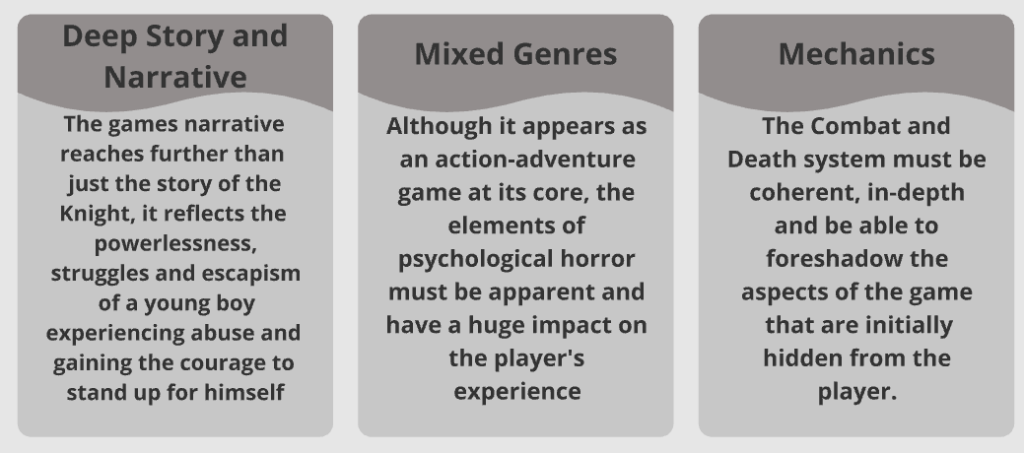As we were shown by Venezia in Week 6, Game Pillars are an essential part of game development as they outline the fundamental concepts that the game explores. These Game Pillars are key to define as they will ensure that the overall vision and idea of the game isn’t lost along the way.

These 3 fundamental game pillars should constantly be looked back upon during development to ensure that the initial and overall idea of the game is kept consistent throughout. However, it is okay to alter/update a pillar if it is really necessary, after all development is about improvement and not being tunnel-visioned.